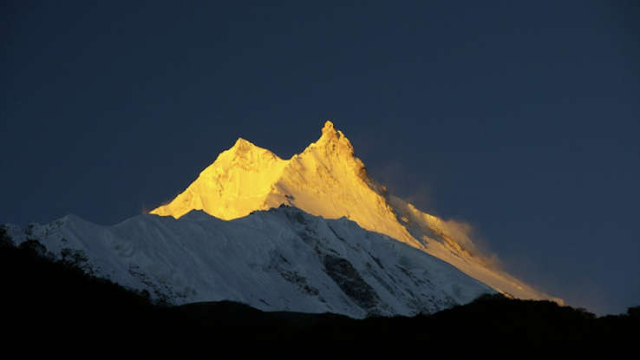- Get link
- X
- Other Apps
- Get link
- X
- Other Apps
Everest (8,848 meters)
The tallest peak in the world, Everest, is situated in the Himalayan mountain range between China and Nepal.
The mountain was originally scaled on May 29, 1953, by Tenzing Norgay and Edmund Hillary of New Zealand, who ascended it from the South Col to the Southeast Ridge.
K2 (8,611 meters)
the world's second-highest mountain. A year after the ascent of Everest, an Italian expedition under the direction of geologist Ardito Desio reached the summit on July 31, 1954. This peak is also referred to as the "mountain of the Italians."
Kangchenjunga (8,586 meters)
It is both the easternmost peak in the entire Himalayan range and the highest point in all of India.
On May 25, 1955, George Band and Joe Brown, who were a member of a British expedition headed by Charles Evans targeting the southwest face, achieved the first ascent of the main summit.
Lhotse (8,516 meters)
By the so-called South Col, this peak is directly connected to Everest, which is a member of the same mountain range.
A Swiss expedition headed by Albert Eggler and including 22 sherpas as well as Wolfgang Diel, Hans Grimm, Hansrudolf Von Gunten, Eduard Leuthold, Fritz Luchsinher, Jürg Marmet, Fritz Müller, Ernest Reiss, and Adolf Reist achieved the first ascent in 1956.
Makalu (8,462 meters)
This mountain, which is the fifth-highest in the world, is located about 22 kilometers from Everest on the boundary between Nepal and Tibet.
Lionel Terray and Jean Couzy, members of a French expedition headed by Jean Franco, Guido Magnone, and Sirdar Gyaltsen Norbu, reached the summit of Makalu on May 15, 1955. Bouvier, from S.Coupe, da Leroux, and A.Vialatte followed the next day.
Cho Oyu (8,201 meters)
Located 20 kilometers from Everest and on the Nepal-China border, this was the fifth Eight-Thousander to be successfully climbed.
The Austrians Herbert Tichy, Joseph Jöchler, and sherpa Pasang Dawa Lama accomplished the first climb of the northwest face on October 19, 1954.
Contrary to what was common at the time, this ascent was completed "alpine style," or without the use of oxygen tanks.
Dhaulagiri (8,167 meters)
This peak, found in the early 1800s, was cited in "1001 Natural Wonders You Must Visit Before You Die" as the tallest mountain in the world at the time.
A Swiss/Austrian expedition headed by Max Eiselin and including Kurt Diemberger, Peter Diener, Ernst Forrer, Albin Schelbert, Nyima Dorji, and Nawang Dorji accomplished the first ascent on May 13, 1960.
Manaslu (8,163 meters)
It contains two other summits in addition to being the eighth-highest mountain in the world: the East Pinnacle (7,992 m) and the North Pinnacle (7,157 m).
As part of a Japanese expedition headed by Yuko Maki, the Japanese Toshio Imanishi and the Nepalese Gyalzen Norbu made the first ascent on May 9, 1956, down the northeast slope using the present standard route.
Nanga Parbat (8,126 meters)
It is a Pakistani mountain that is also known as Diamir (Mountain of the Gods).
It is regarded as Kashmir's sole eight thousand metre peak due to its distinct placement on the south side of the Indus Valley.
Hermann Buhl, an Austrian-German expedition member, performed the first ascent on July 3, 1953, under the direction of Karl Maria Herrligkoffer.
Annapurna (8,091 meters)
It was the first Eight-Thousander to be conquered in history, in 1950, by an expedition led by the Frenchman Maurice Herzog.
Gasherbrum I (8,068 meters)
It is the eleventh-highest mountain in the world and is also known as Hidden Peak. Pete Schoening and Andy Kauffman, two members of the US expedition led by Nicholas B. Clinch, achieved the first ascent on July 5, 1958.
Broad Peak (8,047 meters)
It is situated on the border between China and Pakistan and is also referred to as K3.
The Austrian team, which included Marcus Schmuck, Fritz Wintersteller, Kurt Diemberger, and Hermann Buhl, achieved the first climb on June 9, 1957.
Neither oxygen tanks nor high-altitude porters were used on this occasion.
Gasherbrum II (8,035 meters)
It is the second-highest summit in the Gasherbrum massif and is also referred to as K4. On July 8, 1956, Fritz Moravec, Josef Larch, and Hans Willenpart, members of an Austrian expedition, made the first ascent.
Shisha Pangma (8,027 meters)
This is the lowest summit of the 14 Eight-Thousanders, according to definition.
It is the only one in China, and it took the longest to take control in part due to the clear limitations imposed by the Beijing government.
A Chinese team headed by X Jng accomplished the first climb of Shisha Pangma on May 2, 1964.















Comments
Post a Comment